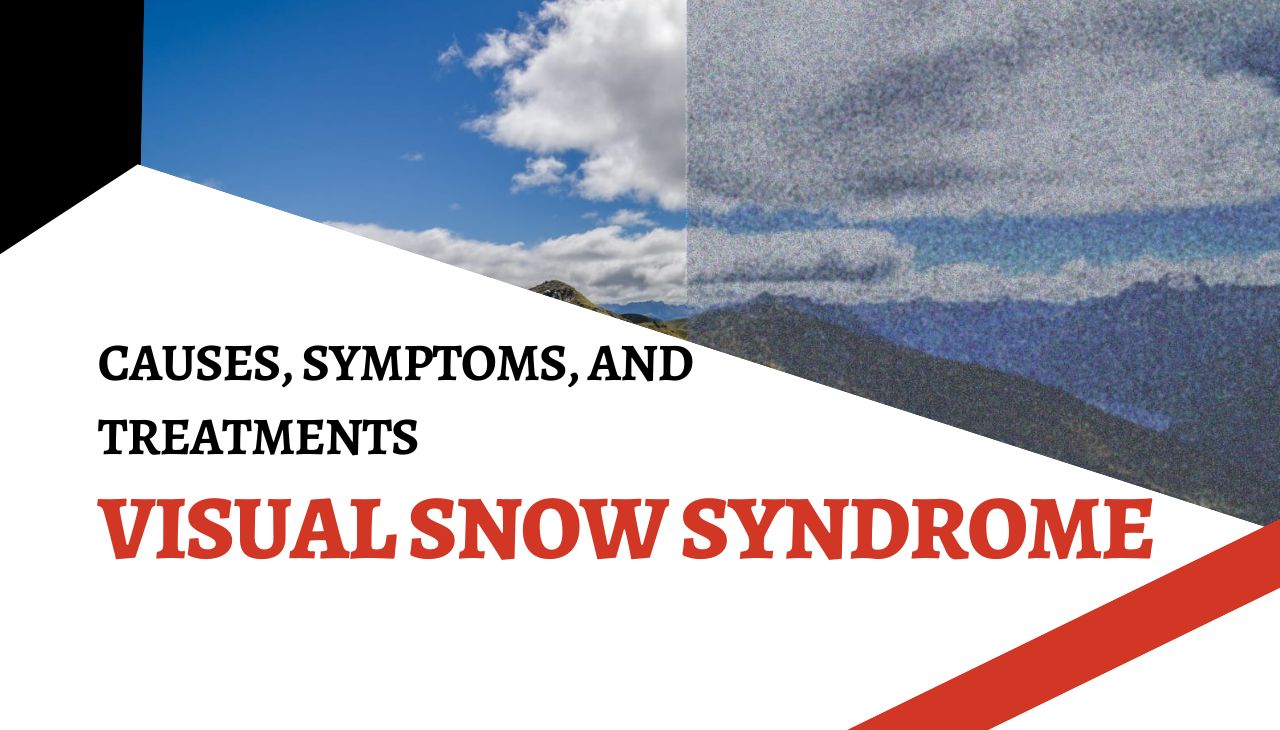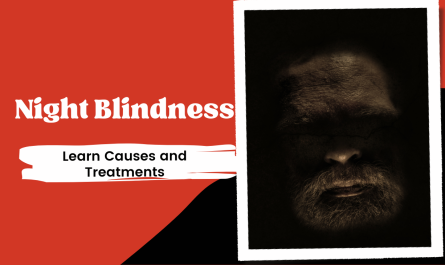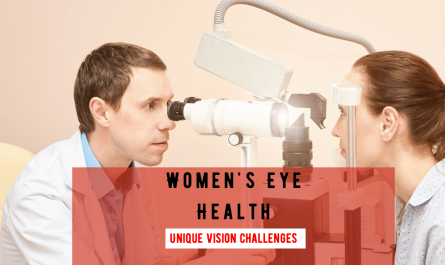Have you ever looked at a blank wall or the sky and seen tiny flickering dots, like TV static? For some, this strange visual disturbance is constant and deeply troubling. It’s not imagination—it could be a neurological condition called Visual Snow Syndrome (VSS).
Visual Snow Syndrome is not well understood, but its impact on daily life is significant. People often struggle to get a proper diagnosis or support. This blog explains what VSS is, why it happens, how it feels, and what treatment options are available.
If you’re seeing static-like patterns, light flashes, or have unusual sensitivity to light, this guide can help you understand why—and what steps you can take.
What Is Visual Snow Syndrome?
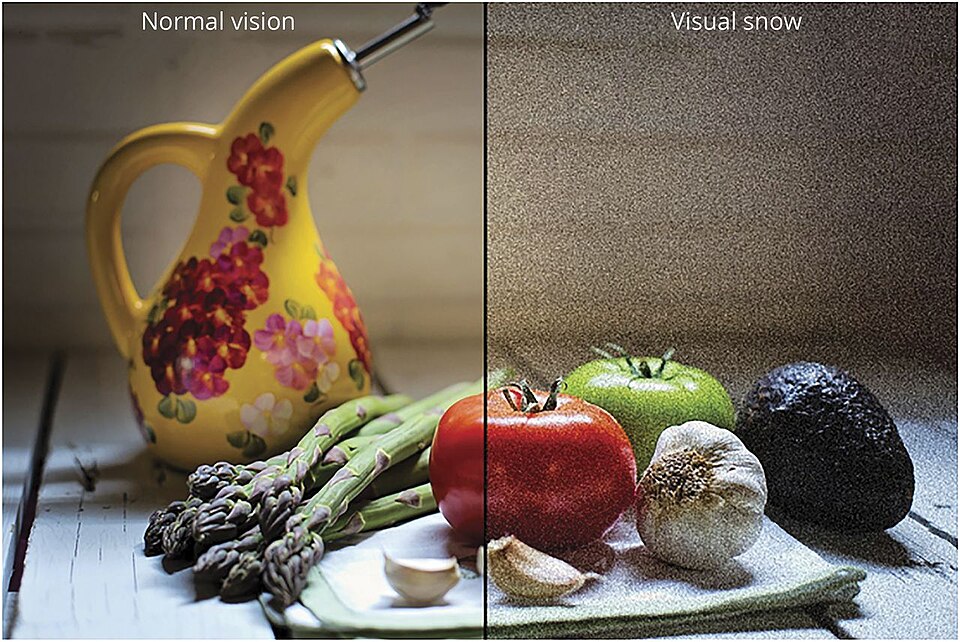
Visual Snow Syndrome is a neurological condition that causes a person to see what looks like static or “visual snow” across their entire visual field. It’s not an eye disease—it’s related to how the brain processes visual information.
The visual disturbance is present even in complete darkness and with eyes closed. It doesn’t go away and isn’t linked to any specific damage in the eye.
Common Descriptions of Visual Snow:
- Static or flickering dots across vision
- Light sensitivity
- Seeing halos around lights
- Afterimages even after looking away
- Trouble seeing at night
Causes of Visual Snow Syndrome
The exact cause of Visual Snow Syndrome is still unknown. However, several possible triggers and contributing factors have been identified.
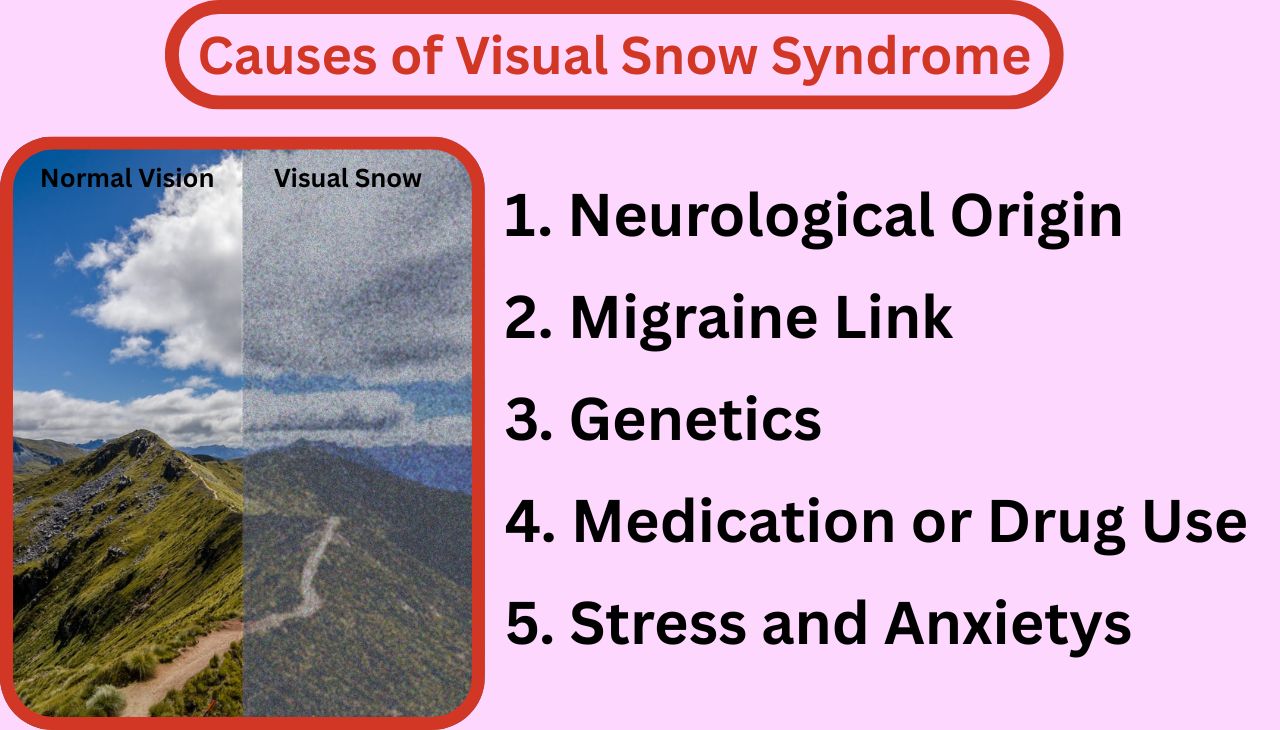
1. Neurological Origin
VSS seems to be rooted in abnormal processing in the visual cortex of the brain. Functional MRI studies show increased activity in areas that manage visual signals.
2. Migraine Link
Many people with VSS also have a history of migraines, especially migraines with aura. The two conditions may share overlapping mechanisms in the brain.
3. Genetics
Some research suggests a possible genetic link, as VSS can run in families. No specific genes have been identified yet.
4. Medication or Drug Use
Some cases begin after taking certain medications or recreational drugs. Hallucinogens in particular have been reported to trigger persistent visual symptoms in a few individuals.
5. Stress and Anxiety
Stress may not cause VSS, but it can make symptoms worse. People often report that their visual snow intensifies during high-stress periods.
Symptoms of Visual Snow Syndrome
VSS includes more than just flickering dots. Most patients experience a combination of symptoms that vary in intensity.
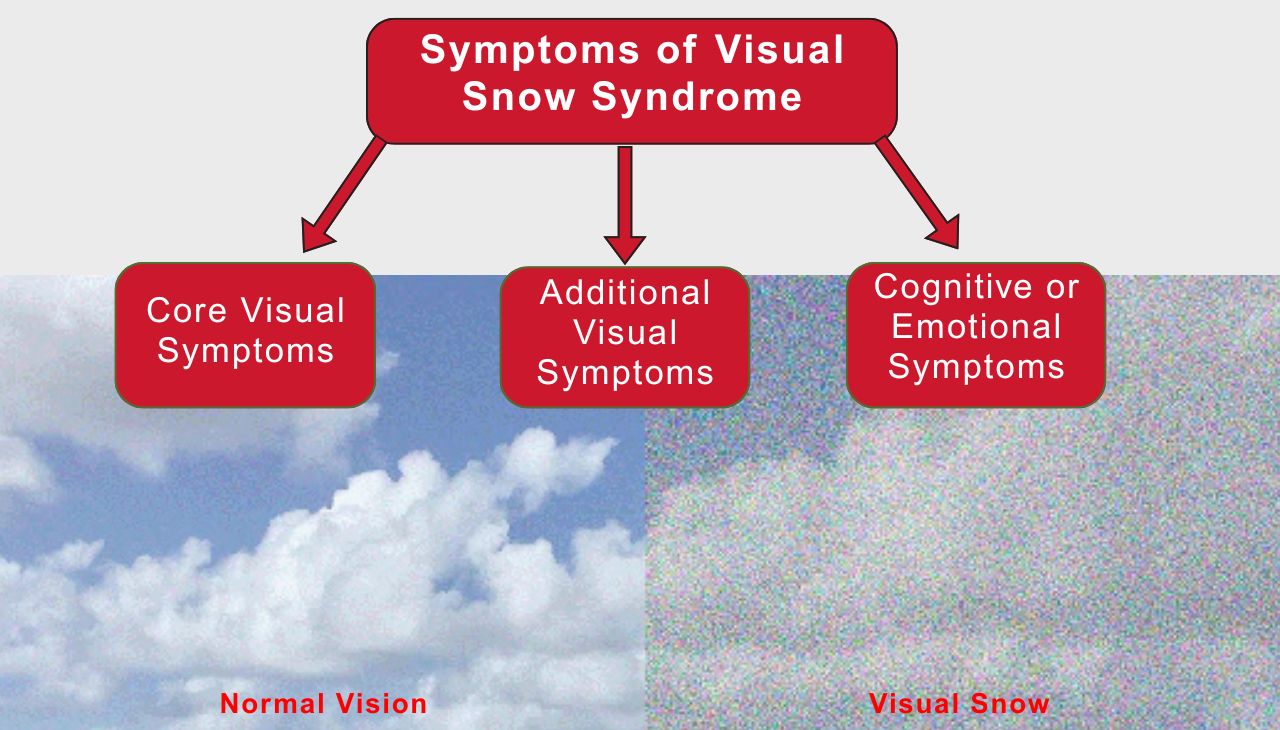
Core Visual Symptoms
- Constant “TV static” across the entire field of vision
- Flickering or shimmering dots, black and white or colored
- Symptoms present both in daylight and in the dark
Additional Visual Symptoms
- Afterimages (palinopsia)
- Light trails from moving objects
- Photophobia (sensitivity to light)
- Difficulty seeing in dim light
- Haloes or glare around lights
- Tinnitus (ringing in the ears), which often coexists with VSS
Cognitive or Emotional Symptoms
- Anxiety about symptoms
- Depression
- Difficulty focusing due to constant visual disturbance
These symptoms can significantly interfere with reading, driving, screen use, and quality of life.
How Is Visual Snow Syndrome Diagnosed?
VSS is a diagnosis of exclusion, which means doctors must first rule out other causes.
Step-by-step Diagnostic Process:
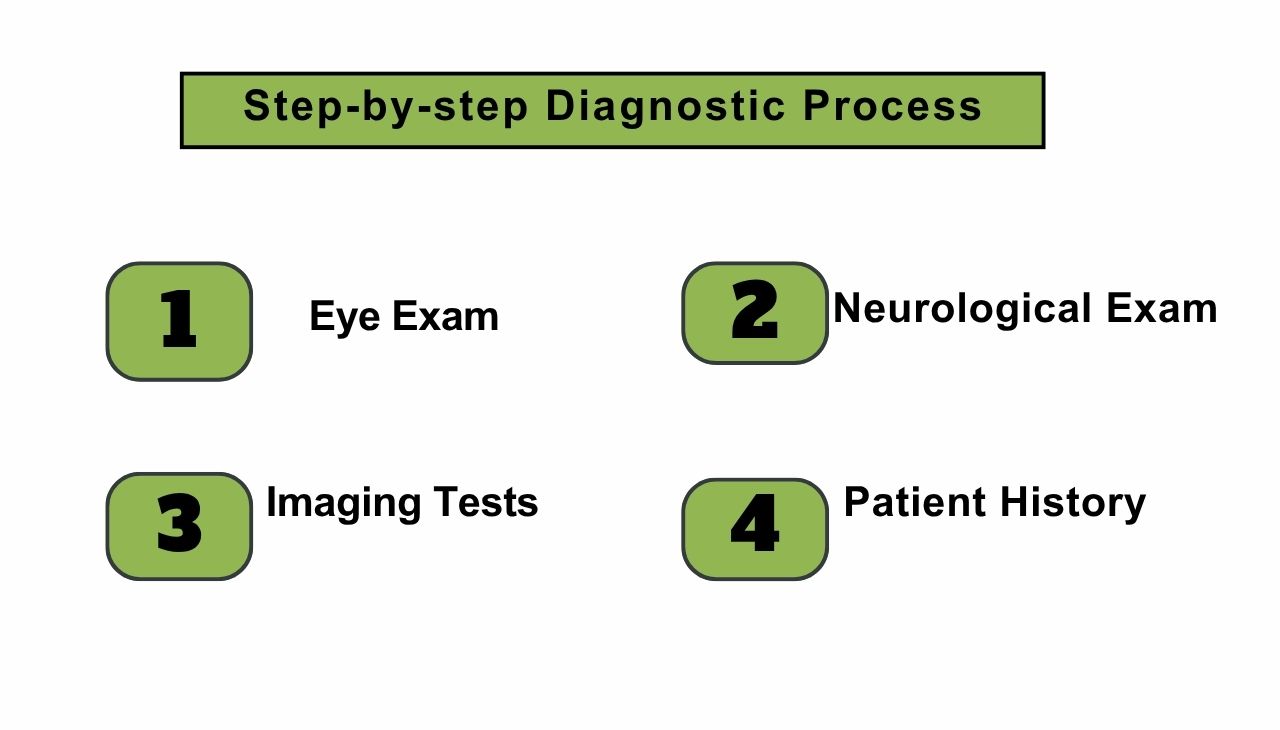
- Eye Exam: A thorough check to rule out eye diseases like cataract, glaucoma, or retinal issues.
- Neurological Exam: To rule out brain or nerve damage.
- Imaging Tests: MRI or CT scans may be done to rule out tumors, lesions, or structural issues.
- Patient History: Includes migraine history, medication use, drug use, or other neurological symptoms.
Because standard tests often come back normal, VSS is sometimes misdiagnosed as anxiety, stress, or even dismissed entirely. Consulting with a specialist is key.
Can Visual Snow Syndrome Be Treated?
There is no known cure, but several management options can help reduce symptoms.
1. Medications
- Lamotrigine: An anti-seizure drug that has shown some benefit in reducing visual snow in small studies.
- Topiramate: Sometimes used for migraines and has helped a few patients.
- Beta-blockers or Antidepressants: May help if migraines or anxiety coexist.
2. Lifestyle Adjustments
- Avoiding Triggers: Like caffeine, bright lights, or stress
- Good Sleep Hygiene: Regular, quality sleep can ease symptoms
- Blue-Light Filters: For screen use
- Wearing Sunglasses: In bright environments
3. Cognitive Behavioral Therapy (CBT)
CBT doesn’t treat the visual disturbance directly, but it helps reduce anxiety and depression caused by the symptoms. Learning to manage stress can improve overall coping.
4. Neuro-Visual Rehabilitation
Some optometrists offer neuro-visual therapy to retrain the brain’s visual system. It’s still an experimental area but has shown early promise.
Living with Visual Snow Syndrome
Visual Snow Syndrome is often chronic, but many learn to adapt.
Tips for Daily Living
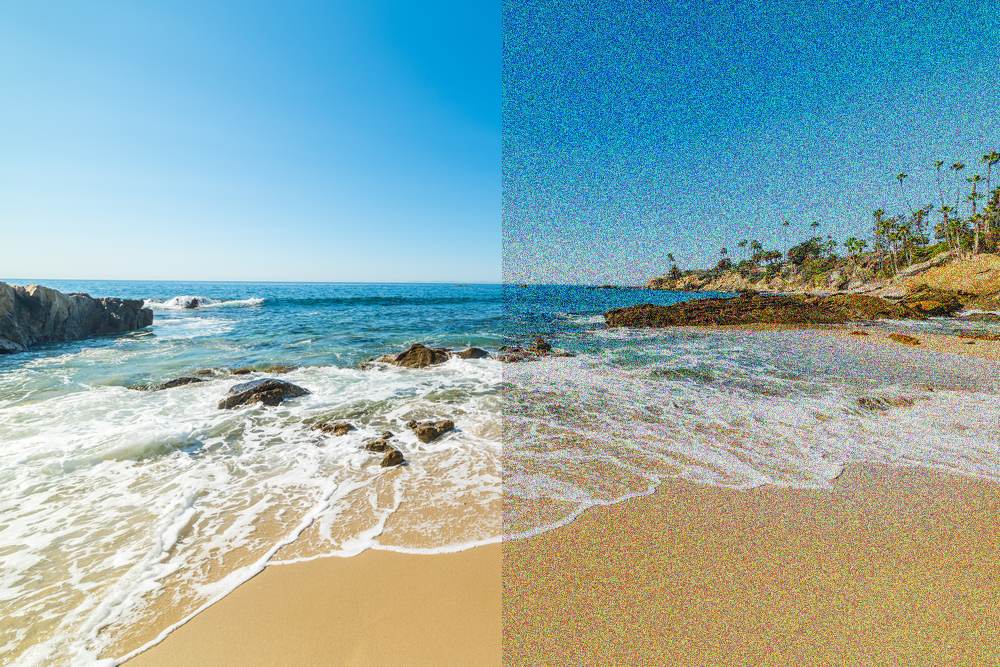
- Use low-brightness settings on all screens
- Install dim lighting in workspaces
- Take frequent screen breaks
- Use large-print books or e-readers
- Practice meditation or relaxation exercises
Support from family, friends, and healthcare professionals makes a big difference. Online communities also offer connection with others who share the condition.
When to See a Specialist
If you notice persistent static in your vision or any of the symptoms mentioned, consult a neuro-ophthalmologist or experienced eye specialist.
Early consultation ensures that other serious conditions are ruled out and that you receive guidance for symptom management.
Laxmi Eye Institute is a leading eye care center in Mumbai with over 30 years of expertise. Known for ethical practices and affordable care, it offers advanced diagnostics and treatment for various conditions including LASIK (Bladeless, Contoura Vision, ICL/IPCL), Cataract, Glaucoma, Diabetic Eye Care, Retina issues, Corneal diseases, and Pediatric Ophthalmology. With branches in Panvel, Kharghar, Kamothe, and Dombivli, Laxmi Eye Institute provides trusted eye care across Navi Mumbai.
To book an appointment, visit the nearest branch or call their helpline.
FAQs
1. Is Visual Snow Syndrome dangerous?
No, it is not life-threatening. But it can seriously affect your daily activities and mental health.
2. Can glasses fix Visual Snow Syndrome?
No. Since the issue is neurological, not optical, glasses do not reduce the static.
3. Is VSS the same as migraine aura?
They are different. Migraine aura is temporary. VSS is constant and does not go away.
4. Can children get Visual Snow Syndrome?
Yes, though it’s less commonly diagnosed in children. Symptoms may be harder to identify.
5. Does anxiety cause VSS?
Anxiety doesn’t cause VSS, but it can make the symptoms worse or harder to manage.
Final Thoughts
Visual Snow Syndrome is a real, often misunderstood condition. While it doesn’t damage the eyes, it impacts how people live, work, and feel every day.
Understanding the symptoms and working with a qualified eye specialist can lead to better management. If you’re struggling with persistent visual disturbances, don’t ignore it. A timely consultation could improve your quality of life.
Let your eyes see clearly—and your mind feel at ease—with support from professionals who understand.

